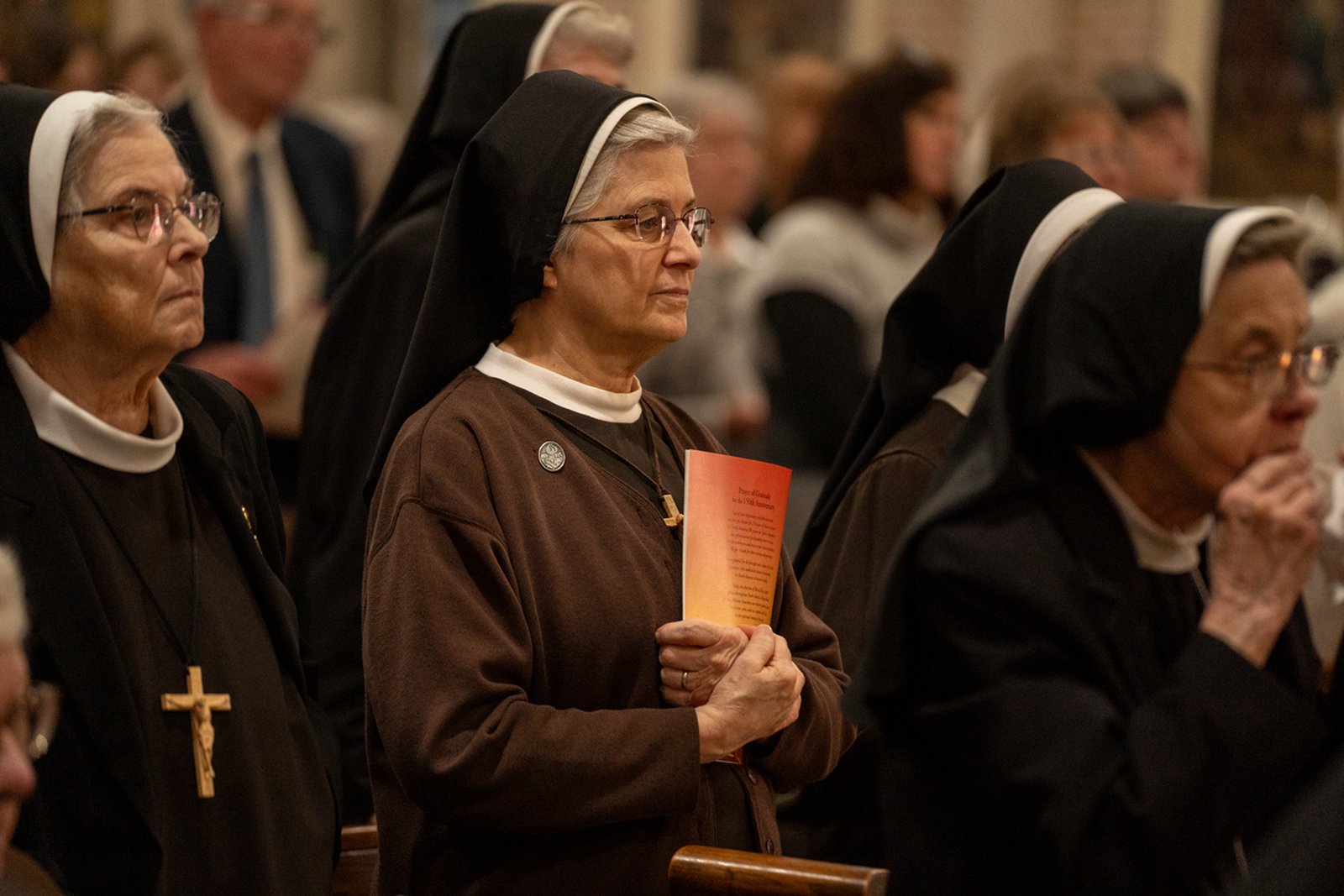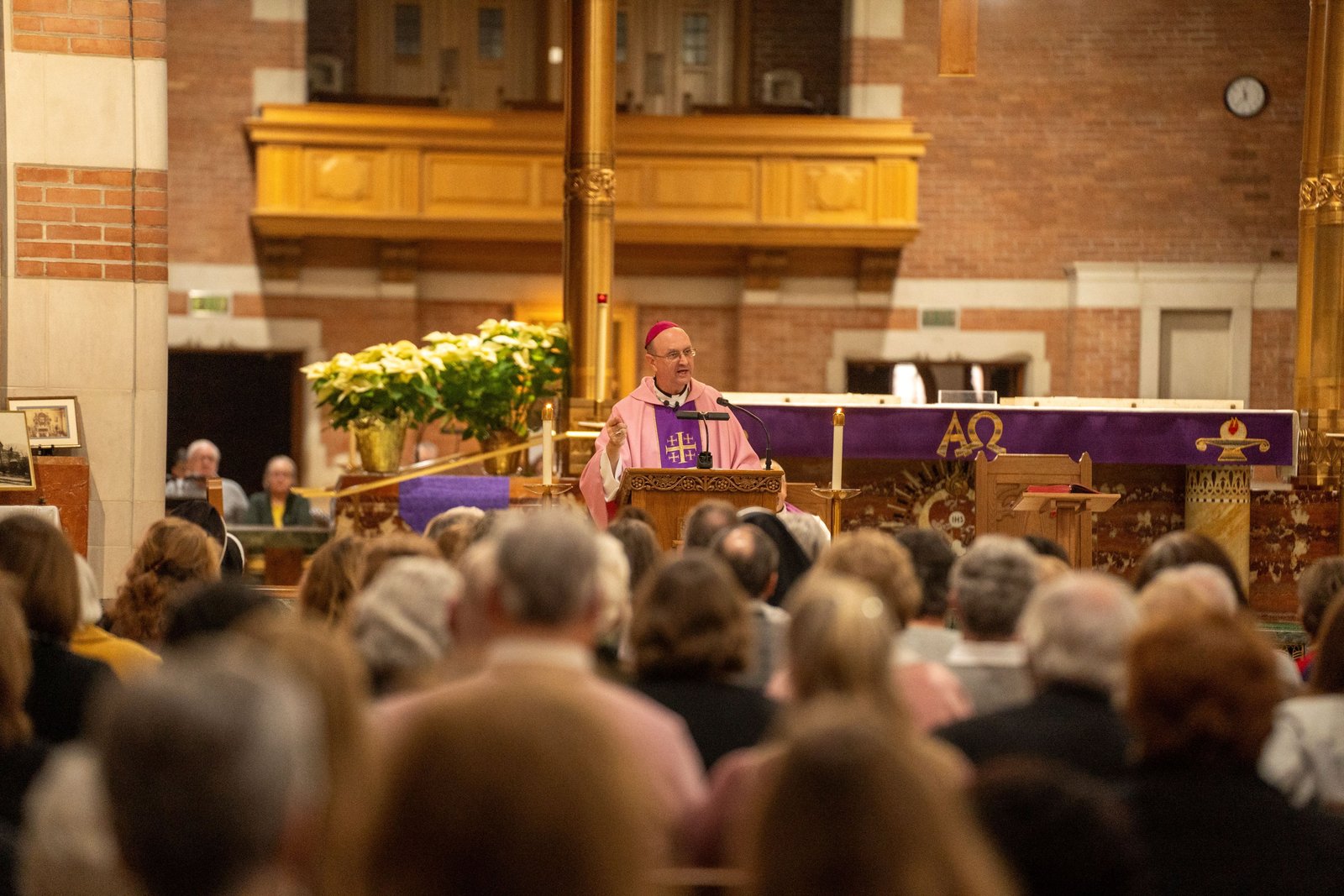For a century and a half, Felicians have followed foundress' example by 'listening to the needs of the people' in Detroit, beyond
LIVOINA — The Felician Sisters have been a bastion of faith, service, education, healing and accompaniment in North America for 150 years.
It’s a proud legacy, particularly in the Archdiocese of Detroit, where the Felicians operate an extensive ministry from Presentation of the Blessed Virgin Mary Convent and its extended campus, which includes Madonna University, Senior Clergy Village, Montessori Center of Our Lady, Angela Hospice and Trinity Health Livonia — formerly St. Mary’s Hospital.
Behind the institutions, the work of the Felician Sisters lives on in the lives of the many students, patients, families and colleagues whose lives were impacted by the sisters' ministry.
To commemorate 150 years of ministry in North America, the Felicians are pausing to give God thanks for the work inspired by the life and example of Blessed Mary Angela Truszkowska, who founded the Felicians in Poland in the 19th century and sent missionaries to North America.

“We are the lucky ones because we got to carry on the work,” Sr. Joyce Marie Van de Vyver, CSSF, told Detroit Catholic. “Even better than that, we carried it onto a new content. We were not born in Poland; we were the ones who were fortunate to be able to grow a total ministry. We don’t have to call it nursing, social work, education, or child care; we call it the work of Mother Angela.”
The Felician Sisters will be celebrating their legacy over the course of 12 months, hosting events through the Our Lady of Hope Province at the various Felician locations throughout the province. Our Lady of Hope Province covers all of the Felician ministries in North America, the result of a merger of the order’s eight former provinces on the continent.
“It really is a blessing from God that we had women who trusted, by following God’s will in their life, they were willing to do what God called them to do,” said Sr. Nancy Marie Jamroz, CSSF, a Felician since 1959 who spent most of her ministry in elementary, secondary and higher education. “They depended on God and were women of prayer, courage, on whose shoulders we stand today.”
Blessed Mary Angela Truszkowska founded the Congregation of Sisters of St. Felix of Cantalice Third Order Regular of St. Francis of Assisi — commonly known as the Felician Sisters — in Warsaw, Poland, in 1855.
In October 1874, Blessed Angela sent five sisters to North America at the request of Fr. Joseph Dabrowski to serve the growing Polish immigrant community in the United States.

The Felicians first arrived in Polonia, Wis., on Nov. 21, 1874, establishing their first school.
In 1882, the sisters moved to Detroit, establishing their first motherhouse on the city’s east side at the corner of Canfield and St. Aubin streets, across from St. Albertus Parish.
In 1936, the Felicians moved to the outskirts of town in Livonia, building a new campus in northern Italian monastic style. The chapel, completed in 1961, is cross-shaped with stained glass, an onyx Moroccan marble altar and a windowed dome above the sanctuary. The chapel is one of 12 sites throughout the Archdiocese of Detroit designated for pilgrimage during the 2025 Jubilee Year of Hope.
The chapel is the centerpiece of the Felician’s Livonia campus, which also is the home of Angela Hospice, Senior Clergy Village, Madonna University and Montessori Center of Our Lady. On Dec. 15, Baltimore Auxiliary Bishop Bruce A. Lewandowski, CSsR., celebrated Mass at the magnificent edifice to commemorate the 150th anniversary.
The first ministry to grow out of Presentation of the Blessed Virgin Mary Motherhouse was St. Mary Hospital, which was built in 1959 in response to a fire at a Ford Motor Company factory.
“Mother Angela’s biggest concern was always to follow the needs of the people,” said Sr. Van de Vyver, who joined the Felicians in 1963. “'Serve wherever you are needed,' (she said). The people told us we needed a hospital in this area. There was a large fire at one of the automotive factories here in Livonia. And the people came crying to us, even the city council, saying, 'Would you please build a community hospital in the area?'”


As the needs of the community grew, so did the Felicians’ mission. There was a need for more teachers, so the Felicians founded Madonna College — now Madonna University — to train more educators. There needed to be a place for younger children to learn, so the religious community founded a child care center. Eventually, the community needed a place for seniors to live, so Marywood Nursing Home was built. Finally, families wanted a comfortable place for their loved ones as they neared the end of life, so Angela Hospice was established.
“You could say that God blessed us so much with an increase in vocations because our work among the faithful, be it in child care, higher education, foreign missions — particularly in Haiti — education K-12, the Montessori program, retreat center, it was all about doing what Mother Angela wanted those first five Felicians in North America to do: listen to the needs of the people,” said Sr. Mary DeSales Herman, CSSF, who joined the Felicians in 1948.
Sr. Herman’s own contact with the Felicians began at a young age when they taught her at St. Hyacinth School in Detroit and later at the Felician Academy, which was located at the Felicians’ first convent across the street from St. Albertus Parish.
Sr. Herman attended Madonna College to study to become a teacher, teaching at St. Florian High School in Hamtramck, then St. Michael School and Ladywood High School in Livonia.
“I was surrounded by Felician Sisters since Day 1,” Sr. Herman said. “Of course, you always wanted to be on their good side, so you’d say you’d think about a vocation. But when I kept studying and discerning, I felt more and more at home.”


Sr. Van de Vyver was a student of Sr. Herman’s at the Felician Academy and remembers how formation at the school first inspired her to be a journalist, then a chemist. But the discerning will of the Felicians' superior had other ideas for her.
“All four of us girls were at the Felician Academy, and our science teacher said, ‘All you Van de Vyver girls need to enter the science fair,'” Sr. Van de Vyver said. “We all joined and won some great prizes in the Detroit science fair downtown. My older sister, who entered the Felician Academy four years earlier than me, she went into education and went on to become president of Madonna University. So when I entered the Felician Sisters four years later, one of the Sisters said to me, 'One of you Van de Vyvers needs to go into science.' I didn’t say I wanted to be a journalist; I just followed God’s will.”
Upon earning a bachelor’s in chemistry, Sr. Van de Vyver felt a call into education, particularly to teach older children, where her chemistry degree could be handy.
They sent her to teach first grade.
“Year after year I ended up with first grade,” Sr. Van de Vyver said. “One year they sent me to second grade, but after the year Mother Superior called and said, 'Sister, would you do another year in second grade?' and I just started crying on the phone. She said ‘I have my answer.’ I said, 'No, no, I’ll teach the religion, I’ll teach first Communion.' I didn’t want to go against God’s will, of course.”
When it was time for Sr. Van de Vyver to obtain a master’s degree, she chose early childhood education and eventually oversaw the early child care center that was built attached to St. Mary Hospital.
“God knew where He needed me,” Sr. Van de Vyver said. “God absolutely knows what He is doing if you follow his will, without questioning, without bucking it or saying, 'I can’t do that,' or 'I don’t want to do that.' Now, I’m a happy old nun.”


Following Mass on Dec. 15 at the Presentation of the Blessed Virgin Mary Chapel, visitors had a chance to meet several of the sisters, thanking them for their years of service to God and man.
“I want people to remember to be grateful to God for all the blessings they have received,” Sr. Jamroz said. “I want people to realize everything that’s happened in our life is a blessing; and with the gift of faith, you can live life more meaningfully, more kindly, more lovingly and more generously.”
Sr. Van de Vyver said it’s a great blessing when she is greeted in public by a person who was taught or ministered to in some way by a Felician Sister, or any religious community.
“Our whole life has been of service to other people, and I think people will always remember that about us,” Sr. Van de Vyver said. “People still send little notes to the convent, recalling a teacher they had in school and asking us for an update about them or for prayers. That is what this celebration is about; it’s not that we have been here for 150 years. It’s more that God has sent us here, and we came.
"It’s not us; it’s not even Mother Angela and the first sisters who came here," Sr. Van de Vyver added. "It’s the fact that people recognized us and see value in our lives and value in the work we do around the world, and that’s not going away, I think.”

Felician ministry can be summed up in the four charisms Blessed Angela gave the community she started — “three Es and an M: Eucharistic, ecclesial, evangelical and Marian,” Sr. Herman said — and it is those values she wants people to remember about the Felicians.
“I’d like the Felician Sisters to be remembered for all the blessings that God has given us, that we were able to serve in such a variety of ministries,” Sr. Herman said. “That we continue to inspire and motivate people today by the examples of St. Francis, Blessed Mary Angela, to honor Jesus in the Eucharistic sacrament, to love and imitate our Blessed Mother in our daily lives and to promote the spirit of St. Francis, empowered by the gifts of the Holy Spirit, that we continue to respond to the needs of our time, to carry forward the needs of our mission and of our mother, Blessed Mary Angela."
The closing Mass for the sesquicentennial celebration will take place at the Presentation of the Blessed Virgin Mary Chapel in Livonia at 4 p.m. on Friday, Nov. 21, 2025.
Copy Permalink
Consecrated life












